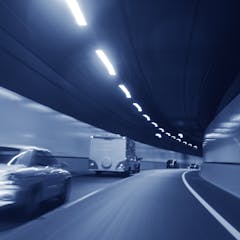
Articles on Air pollution
Displaying 261 - 280 of 390 articles

Energy Secretary Rick Perry has proposed to reward coal plants for stockpiling fuel onsite – allegedly making the power system more reliable. Two economists give this idea a failing grade.

For the first time research has shown that mercury released in the northern hemisphere ends up in Australia’s tropics.

The use of small devices to measure the presence of fine particles in the air is becoming widespread. They’re one more weapon to fight against air pollution, but questions remain on their reliability.

In recent years the number of motor vehicles – and the pollution they generate – has grown astronomically, leading some citydwellers to wear facemasks in the hopes of protecting themselves. So do they work?

Subways seem like the perfect solution to improve air quality in cities. But what about air quality underground?

A recent study shows that large piles of coal produce measurable quantities of fine particulate air pollution within a 25-mile radius. Covering coal trains and storage piles could reduce the problem.

The estimated economic value of minimising the damage to public health has been reduced by 80 percent.

Australia is the 16th-largest emitter of mercury in the world. A huge amount comes from coal power stations – and a new report argues our pollution guidelines are hopelessly lax.

Research in Kenya’s capital found average levels of hazardous solid and liquid particles in the air within households were three times more than the WHO recommended maximum level.

A new study suggests climate change will cause changes to patterns of ground-level ozone and smog – two deadly pollutants set to increase deaths by about 260,000 worldwide by the end of the century.

Many new housing developments are being built along busy roads and rail lines, but lack design features that would reduce occupants’ exposure to harmful traffic pollution.

As the latest controversy about tunnel exhaust stacks and respiratory health plays out in the media, some community members are proposing solutions that just don’t make sense.

In November 2016, smog in New Delhi was 16 times above safe levels. An Indian researcher dug into the data to find out why, and how India can keep its capital breathing safely.

Australia needs to ‘embrace uncertainty’ on the future of transport, with flexible, holistically focused policy.

Coal-fired power plants produce air pollution that kills thousands of Americans every year. President Trump’s embrace of coal energy will delay a shift to cleaner fuels that is saving money and lives.

Large livestock farms, known as CAFOs, have polluted air and water in many communities. A recent court decision will force CAFOs to report their air emissions from manure and other sources.

But the most effective measures will be unpopular.

An extensive amount of research has shown a direct link between air quality and fetal and infant health. Cleaner air has saved lives – and money.

Developed nations need to stop telling smoggy cities to clean up their act and start critiquing their own consumption habits.

The merchant navy – some 20,000 ships – carries the vast majority of trade goods around the world. Unfortunately, they also spew toxic pollutants that harm people and the environment.
